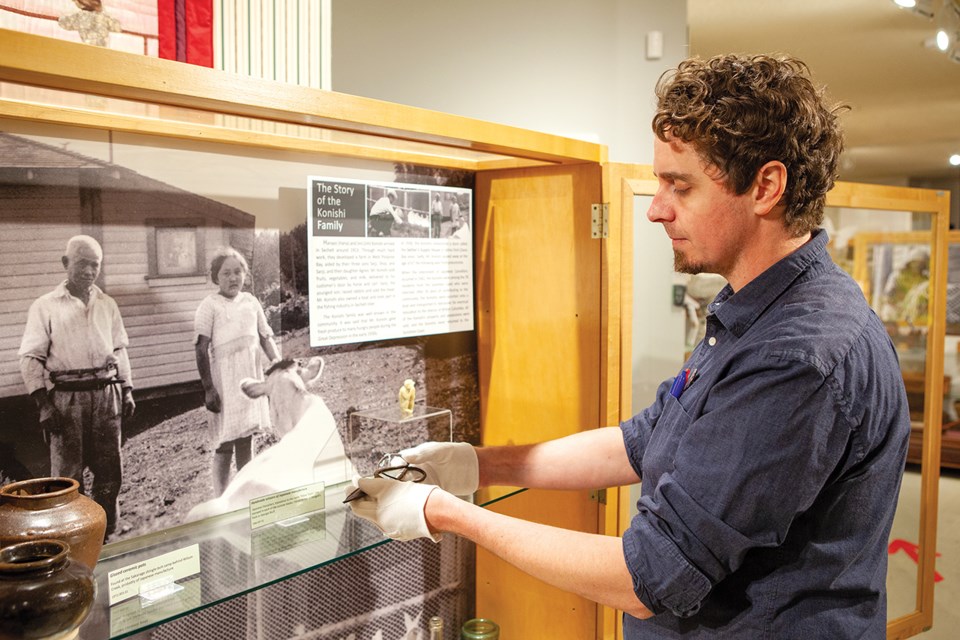The Sunshine Coast Museum and Archives will be holding to its commitment to restore artifacts to Indigenous groups and institutions throughout 2022, says Matthew Lovegrove. The organization’s curator–manager sees repatriation as the end of one story and the beginning of another.
During a closure due to COVID-19 health restrictions in 2020, the museum conducted a collection survey. The survey uncovered a dozen dentalium shells, which would have adorned traditional Lil’wat clothing.
Lovegrove consulted an archeological database, which identified the items as relating to Indigenous ceremonial or burial traditions.
The next step was a phone call to the curator of the Squamish-Lil’wat Cultural Centre.
“We reached out to [curator] Alison Pascal,” said Lovegrove, “whom we had worked with in the past. It started a conversation and we just went from there.”
The repatriation of the dentalium shells was featured in Maclean’s magazine. Meanwhile, the museum’s policy on repatriation—implemented officially in 2010—is building a foundation for creative partnerships.
“I love to point to the collaborations we’ve done with the Skwxwú7mesh Nation and the shíshálh Nation,” said Lovegrove. “The Kwekínmut is an exhibit that showcases the Skwxwú7mesh Nation’s stone tools. Visitors can hear the Skwxwú7mesh Nation origin legend that takes place here in Gibsons. It’s a co-curated exhibit and it’s one of those opportunities where working together can help educate folks.”
As the curator of the Squamish-Lil’wat Cultural Centre, Alison Pascal is clear that repatriation means more than building an authoritative collection. It is a way of restoring cultural voids left by government policies that were designed to obliterate identity.
“There were losses of knowledge in Indigenous communities,” Pascal said. “All of those losses look different for each community. When we’re thinking about repatriation, we’re thinking about how it helps us to remember and how it helps us to find or [re-]create all of those cultural losses that we had suffered due to that really oppressive time.”
The Sunshine Coast Museum and Archives was a signatory to the Repatriation Call to Action issued by the BC Museums Association in 2021. Ryan Hunt, the BCMEA’s executive director, stresses the urgent need for publicly-funded institutions to return ancestral human remains and burial items.
“I mean it’s absolutely critical. But it’s all about relationship-building,” said Hunt. “Because what we find with members and Indigenous communities is that repatriation doesn’t just take one form.”
At the Sunshine Coast Museum, curator-manager Lovegrove plans in 2022 to dedicate staff time to identify items overdue for repatriation. He and Pascal are in talks about a collection of woven cedar baskets.
Staff have updated exhibits to include stories that merit commemoration instead of celebration. Words in the snichim (Skwxwú7mesh) and she shashishalhem (shíshálh) languages have been added to the building’s outdoor mural, painted by Gibsons artist Jan Poynter.
“We have a lot of work to do,” Lovegrove said. “And we’re just inspired by so many great cultural workers who are taking the lead to create a more accurate view of history.”



